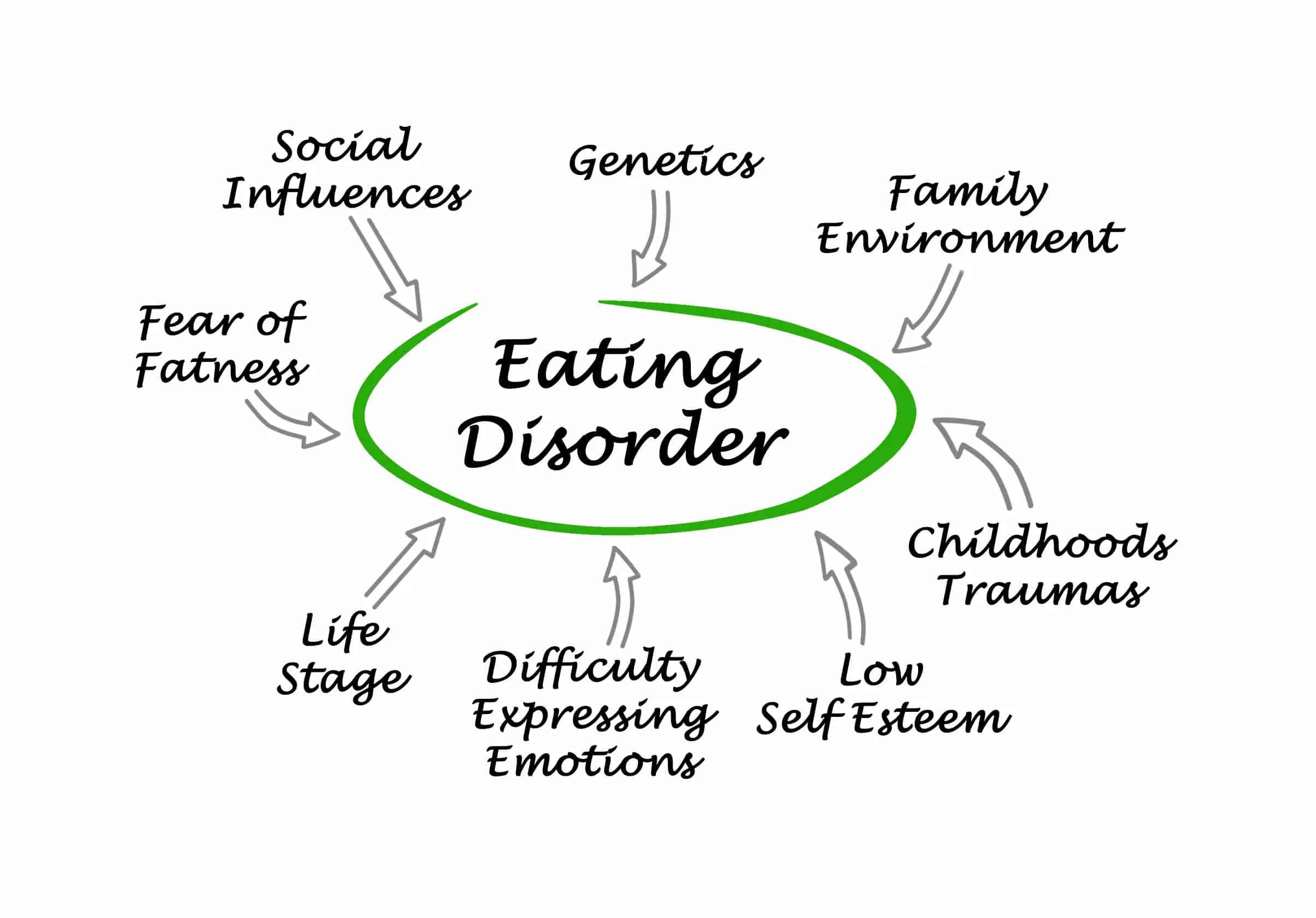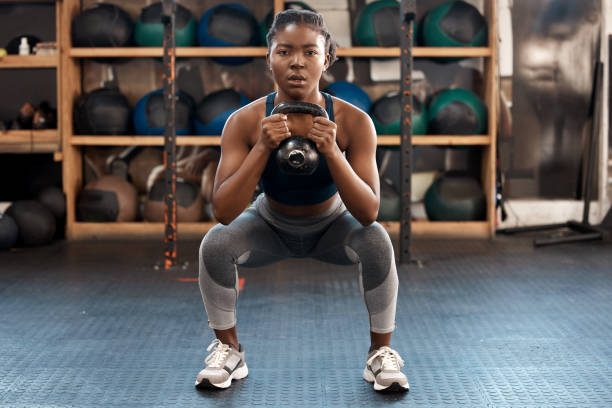Health
Disordered Eating Vs. Eating Disorder: Experts Explain The Differences And When To Seek Help

Disordered eating and clinical eating disorders are not interchangeable. Disordered eating refers to irregular or emotionally influenced habits around food: chronic dieting, skipping meals, rigid food rules, occasional binge episodes or persistent preoccupation with calories, weight or body shape. These habits may shift, but when repeated over time they often point to growing vulnerability.
Clinical eating disorders, by contrast, are diagnosed mental-health or medical conditions marked by persistent, patterned behaviours that impair physical health, mental wellbeing or daily functioning. Conditions such as anorexia nervosa, bulimia nervosa, binge‑eating disorder and other specified feeding or eating disorders fall into this category.

Image: Google
Evidence from Nigerian research confirms that disordered eating attitudes and risk for eating disorders are present among young adults and adolescents. In a study of more than 1,050 undergraduates from two higher‑education institutions in Lagos, roughly 16 percent scored positive on the EAT‑26 screening tool for disordered eating attitudes.
At a university in Ile‑Ife, a survey of female undergraduates found that 17.1 percent were classified as at high risk for eating disorders, based on the same screening instrument.
A more recent analysis among female undergraduates in Lagos found a lower prevalence of disordered eating (about 5 percent). Still, the study flagged a strong association between body-image dissatisfaction, body‑mass index (BMI) and disordered eating attitudes.
Adolescents are not exempt: a survey of 13 to 19-year-olds in Ibadan used screening tools to assess disordered eating behaviours and feeding/eating disorders. Results showed that 28.2 percent exhibited disordered eating behaviours, and a significant portion also met screening criteria for feeding/eating disorders.

Image credit: Google
Clinical, clearly diagnosed cases have also been documented. There’s a recorded instance of a 20-year-old undergraduate at a Nigerian university diagnosed with anorexia nervosa showing that what may start as dieting or food anxiety can escalate into serious health and psychiatric risk.
Because disordered eating and eating disorders exist within the Nigerian context, distinguishing between them matters. Persistent preoccupation with food, weight or body shape; regular dieting, bingeing or purging; emotional distress tied to eating; and disruption of everyday life are all red flags. When those signs persist, seeking professional support whether nutritional counselling, psychological therapy or medical care becomes essential.
Health
The Exercise That Keeps You Younger

If you’ve ever met someone in their fifties who moves like they’re still in their twenties, it’s likely they’ve discovered the simple habit that keeps the body from giving in to age: regular movement.

While fitness trends keep changing, one form of exercise has stayed constant in its benefits: strength training. It’s not about building bulky muscles or chasing a perfect body. It’s about keeping your bones strong, your joints stable, and your metabolism from slowing down. After the age of 30, the body naturally begins to lose muscle each year. That’s why everyday tasks, like climbing stairs or carrying groceries, start to feel heavier. Strength training helps reverse that.

Research supports this claim. People who lift weights or engage in resistance exercises have lower risks of diabetes, heart disease, and cognitive decline. But beyond the science, it’s about how it makes you feel. Nigerians juggling work, traffic, and family life know how draining each day can be. Even short sessions of body-weight squats, lunges, or push-ups a few times a week can recharge you better than most expensive wellness fads.

It also boosts your mood. Physical activity releases chemicals that help clear mental fog and lift your energy. It’s your body’s way of proving it still has strength to give.
You don’t need a gym to start. A mat, a pair of dumbbells, or even two water bottles will do. The goal is to stay consistent, to keep your body active enough to stay responsive.
Each push, lift, or stretch is a reminder that staying young isn’t about denying age; it’s about moving through it with strength.
Health
Which Fruits Are Highest in Calcium?

When it comes to calcium, most people immediately think of milk, cheese, or yoghurt. But if you don’t consume dairy or just want variety, certain fruits can help fill the gap. While they won’t match dairy in calcium content, these fruits can contribute meaningfully to your daily needs.
Why Calcium Matters
Calcium isn’t just for strong bones and teeth. It also keeps muscles working properly, supports nerve function, and helps maintain a steady heartbeat. A consistent intake is essential at every stage of life, especially for growing children, women over 30, and older adults who face higher risks of bone loss. Here are some fruits that deliver calcium
Oranges

Oranges are widely available in Nigeria and more than just a source of vitamin C. A medium-sized orange contains around 60 mg of calcium, and fresh juice, particularly fortified versions, can provide even more.
Figs (Fresh and Dried)

Figs are among the top fruit sources of calcium. Five fresh figs offer roughly 90 mg, while half a cup of dried figs can reach about 120 mg. They also provide fiber and potassium, making them a wholesome addition to snacks or breakfast bowls.
Blackcurrants

Though less common locally, blackcurrants are worth noting. 100 grams supply about 55 mg of calcium and antioxidants that support overall health.
Kiwis

A cup of sliced kiwis contains approximately 35 mg of calcium. They also provide vitamin C, which helps the body absorb calcium from other foods.
Mulberries
Mulberries contain roughly 39 mg of calcium per 100 grams. They are also rich in iron and vitamin K, both of which work alongside calcium to maintain strong bones.
Papaya (Pawpaw)

Papaya is a staple in Nigerian markets and households. 100 grams provides about 30 mg of calcium. It’s refreshing on its own or paired with a splash of lime for breakfast or snacks.
Tangerines

Tangerines contain around 37 mg of calcium each. They are easy to carry, naturally sweet, and a convenient way to get a small calcium boost between meals.
Making Fruits Work for You
Fruits alone won’t meet your daily calcium requirement. However, when combined with vegetables, beans, or fish, they help you get closer without relying solely on dairy. For Nigerians, enjoying seasonal fruits like pawpaw, oranges, or tangerines is a simple and tasty way to support bone health.
Health
Easiest Ways to Boost Dopamine Naturally

Dopamine is a brain chemical that drives motivation, focus, and the sense of reward. Low levels can contribute to fatigue, reduced drive, and in some cases, depression. Fortunately, there are natural ways to support dopamine production without supplements or medications.
Move Your Body

Physical activity is one of the most effective ways to increase dopamine. You don’t need hours at the gym, brisk walks, dancing in your living room, or even light jogging around your compound can help. What matters most is regular movement, not intensity. Over time, consistent activity helps maintain healthy dopamine levels.
Eat Foods That Support Dopamine

Certain foods contain tyrosine, an amino acid essential for dopamine production. Beans, groundnuts, eggs, chicken, fish, and soy are excellent choices. Fruits such as bananas and avocados can also support dopamine naturally. Diets high in sugar and heavily processed foods, on the other hand, may interfere with dopamine regulation.
Prioritise Quality Sleep
Adequate rest is vital for dopamine balance. Research shows that dopamine levels rise in the morning but drop significantly when sleep is inadequate. Aim for seven to eight hours each night. Establish a consistent sleep schedule and reduce screen time before bed to improve quality rest.
Get Natural Sunlight

Exposure to sunlight helps the brain produce dopamine and supports vitamin D levels, which are important for brain function. Spending 15 to 20 minutes outdoors in the morning or late afternoon is sufficient to stimulate production. Even sitting by a bright window can help on cloudy days.
Achieve and Acknowledge Small Goals
Dopamine increases when you complete tasks or achieve goals. Break larger projects into smaller steps and celebrate milestones along the way. This could be finishing a work task, completing a week of workouts, or sticking to a healthy eating plan. The satisfaction reinforces positive motivation.
Foster Social Connections

Interacting with friends and family, sharing laughter, and offering support to others all trigger dopamine release. Strong social connections are not just enjoyable; they actively influence brain chemistry and overall wellbeing.
Maintaining healthy dopamine levels is about balance, not constant stimulation. Incorporating movement, nutritious foods, sufficient sleep, sunlight, achievable goals, and meaningful social connections into your daily life can naturally support motivation, focus, and overall mental health.
-

 Beauty4 months ago
Beauty4 months agoIs There Anything Like Too Many Accessories?
-

 Movies5 months ago
Movies5 months agoHijack ’93: The Forgotten Nigerian Hijack Now a Netflix Hit
-

 Celebrity News4 months ago
Celebrity News4 months agoToke Makinwa Shares Graceful Pregnancy Reveal
-

 Movies4 months ago
Movies4 months agoTrailer Review: Highest to Lowest
-

 Skin Care5 months ago
Skin Care5 months agoUnmasking The Truth: Do Face Masks Really Work?
-

 Sex & Relashionships4 months ago
Sex & Relashionships4 months agoSigns You Have Abandonment Issue and How to Heal
-

 Music4 months ago
Music4 months agoKokopee Drops EP ‘All I Need It’s Kokopee
-

 Celebrity News4 months ago
Celebrity News4 months agoAsake Shows off New Hair on Stage
-

 Models4 months ago
Models4 months agoDorothy Anador Celebrates Her Best Self in Birthday Photoshoot
-

 Movies4 months ago
Movies4 months agoMovie Review: Task Official Trailer
























